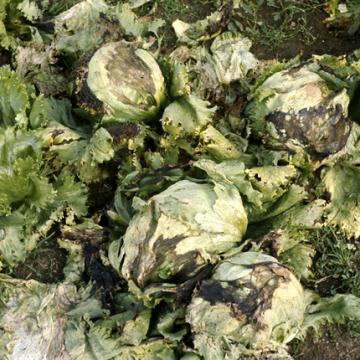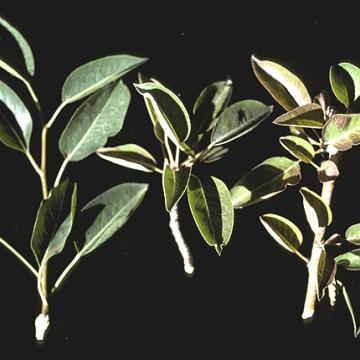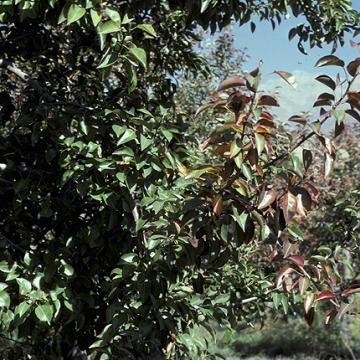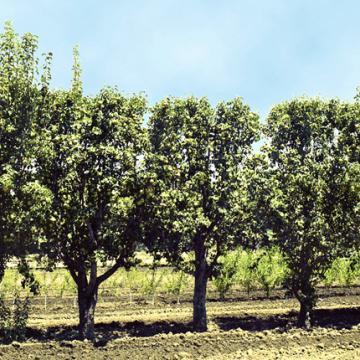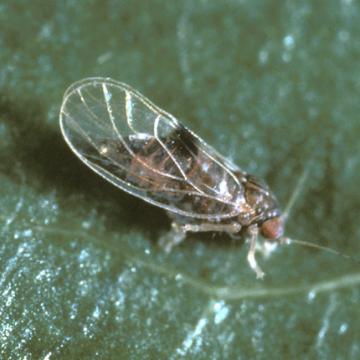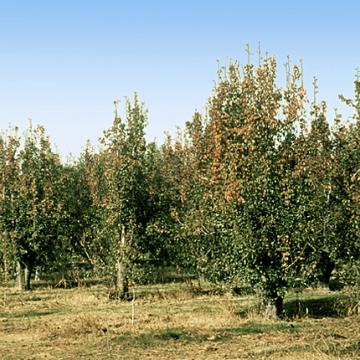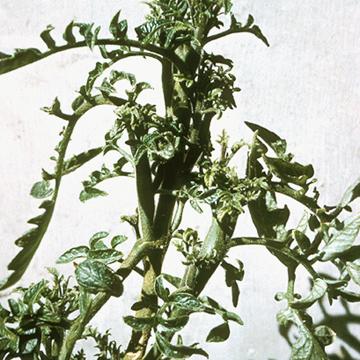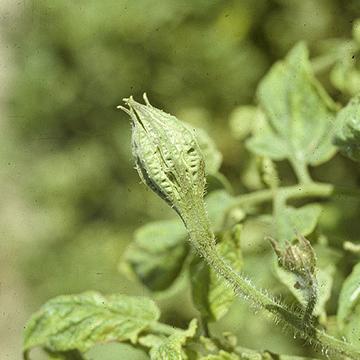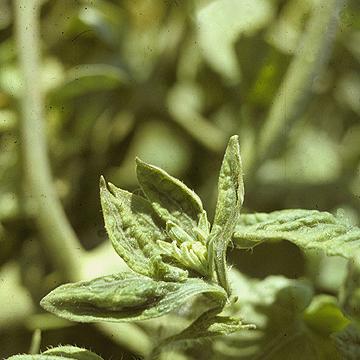DISEASE: Marginal leaf blight
HOST: Lettuce
Marginal leaf blight first appears as slimy wilting of leaf margins. Small, reddish lesions may be seen on leaf blades. Infected tissues turn brown to black in time.
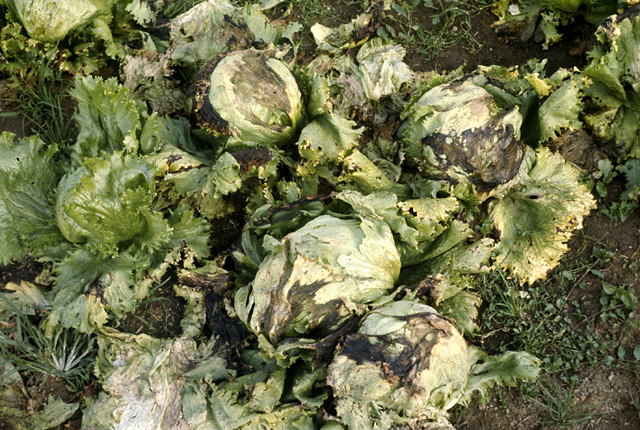
Marginal leaf blight | Lettuce
DISEASE: Marginal leaf blight
HOST: Lettuce (Lactuca sativa)
PATHOGEN: Pseudomonas marginalis
SOURCE: L. Fucikovsky
DISEASE: Pear decline
HOST: Pear
Healthy pear shoot (left) and diseased shoots (center and right). Leaves are reddish and growth is stunted.
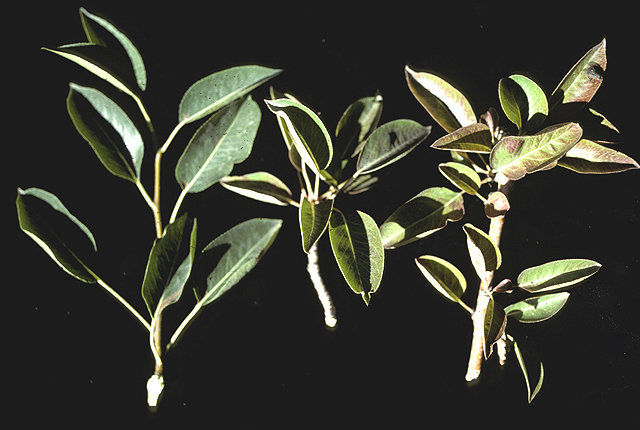
Pear decline | Pear
DISEASE: Pear decline
HOST: Pear (Pyrus communis)
PATHOGEN: 'Candidatus Phytoplasma pyri'
PATHOGEN SYNONYM: Phytoplasma Apple proliferation group
SOURCE: S. Thomson
DISEASE: Pear decline
HOST: Pear
Close-up of infected pear branch showing premature reddish coloration of leaves and cupped, stunted leaves.
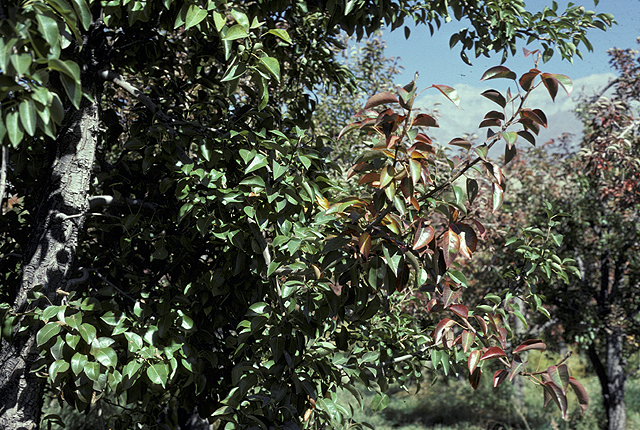
Pear decline | Pear
DISEASE: Pear decline
HOST: Pear (Pyrus communis)
PATHOGEN: 'Candidatus Phytoplasma pyri'
PATHOGEN SYNONYM: Phytoplasma Apple proliferation group
SOURCE: S. Thomson
DISEASE: Pear decline
HOST: Pear
Reduced growth of infected trees in center of image.
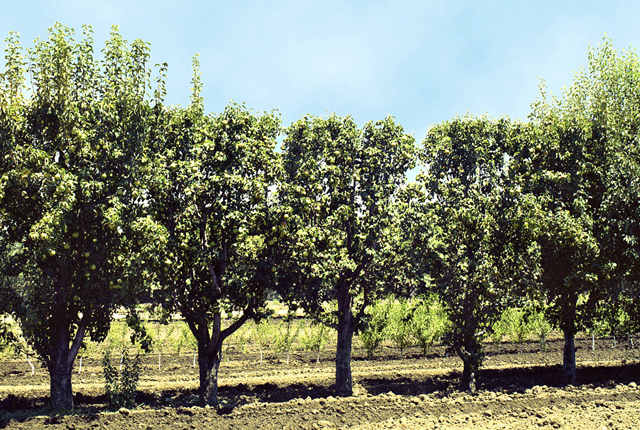
Pear decline | Pear
DISEASE: Pear decline
HOST: Pear (Pyrus communis)
PATHOGEN: 'Candidatus Phytoplasma pyri'
PATHOGEN SYNONYM: Phytoplasma Apple proliferation group
SOURCE: W. Sinclair
DISEASE: Pear decline
HOST: Pear
Psylla pyricola, the psyllid vector of pear decline phytoplasma.
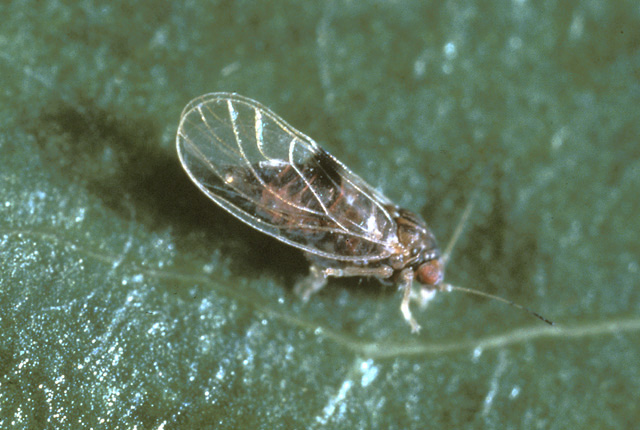
Pear decline | Pear
DISEASE: Pear decline
HOST: Pear (Pyrus communis)
PATHOGEN: 'Candidatus Phytoplasma pyri'
PATHOGEN SYNONYM: Phytoplasma Apple proliferation group
SOURCE: J. Clark, A. Purcell, M. Davis
DISEASE: Pear decline
HOST: Pear
'Bartlett' pears were grafted onto tolerant rootstock. All trees are infected. Note yellowish, diseased branches.
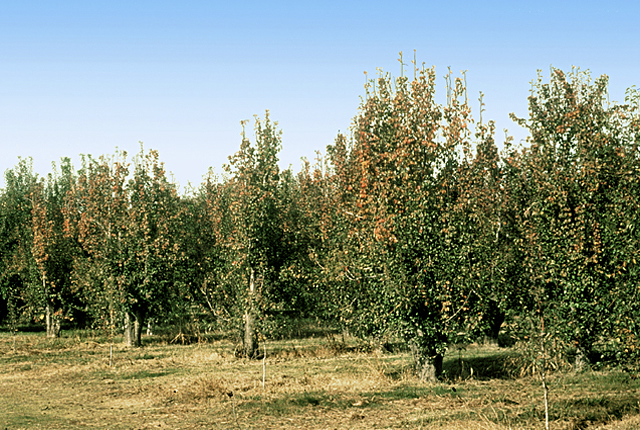
Pear decline | Pear
DISEASE: Pear decline
HOST: Pear (Pyrus communis 'Bartlett')
PATHOGEN: 'Candidatus Phytoplasma pyri'
PATHOGEN SYNONYM: Phytoplasma Apple proliferation group
SOURCE: C. Smart
DISEASE: Tomato big bud
HOST: Tomato
Characteristic symptoms are swollen, apical stems and stunted leaves. Apical stems are generally thickened and assume a stiff and erect growth habit. Internodes are shortened and flower buds are greatly enlarged.
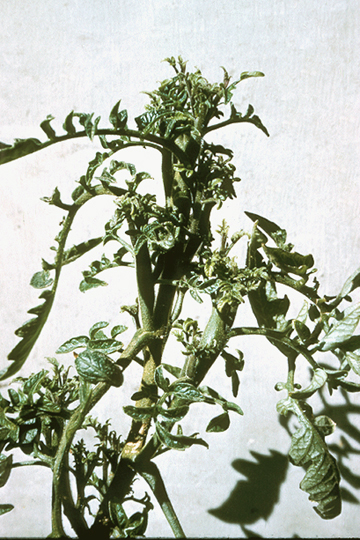
Tomato big bud | Tomato
DISEASE: Tomato big bud
HOST: Tomato (Lycopersicon esculentum)
PATHOGEN: 'Candidatus Phytoplasma asteris'
PATHOGEN SYNONYM: Phytoplasma Aster yellows group
SOURCE: D. Teakle
DISEASE: Tomato big bud
HOST: Tomato
Symptoms are enlarge sepals that do not separate. Flower buds stay green and do not develop into fruit. Leaves are small and chlorotic.
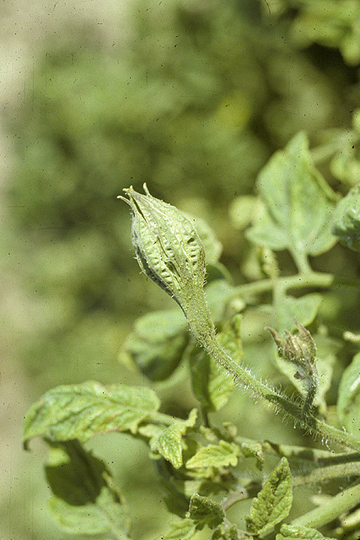
Tomato big bud | Tomato
DISEASE: Tomato big bud
HOST: Tomato (Lycopersicon esculentum)
PATHOGEN: 'Candidatus Phytoplasma asteris'
PATHOGEN SYNONYM: Phytoplasma Aster yellows group
SOURCE: S. Thomson
DISEASE: Tomato big bud
HOST: Tomato
Abnormal flower bud with greatly enlarged sepals. Sepals do not separate, fruit is not produced, and apical growth is upright.
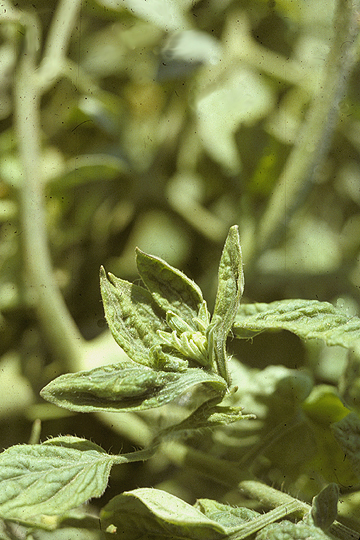
Tomato big bud | Tomato
DISEASE: Tomato big bud
HOST: Tomato (Lycopersicon esculentum)
PATHOGEN: 'Candidatus Phytoplasma asteris'
PATHOGEN SYNONYM: Phytoplasma Aster yellows group
SOURCE: S. Thomson


